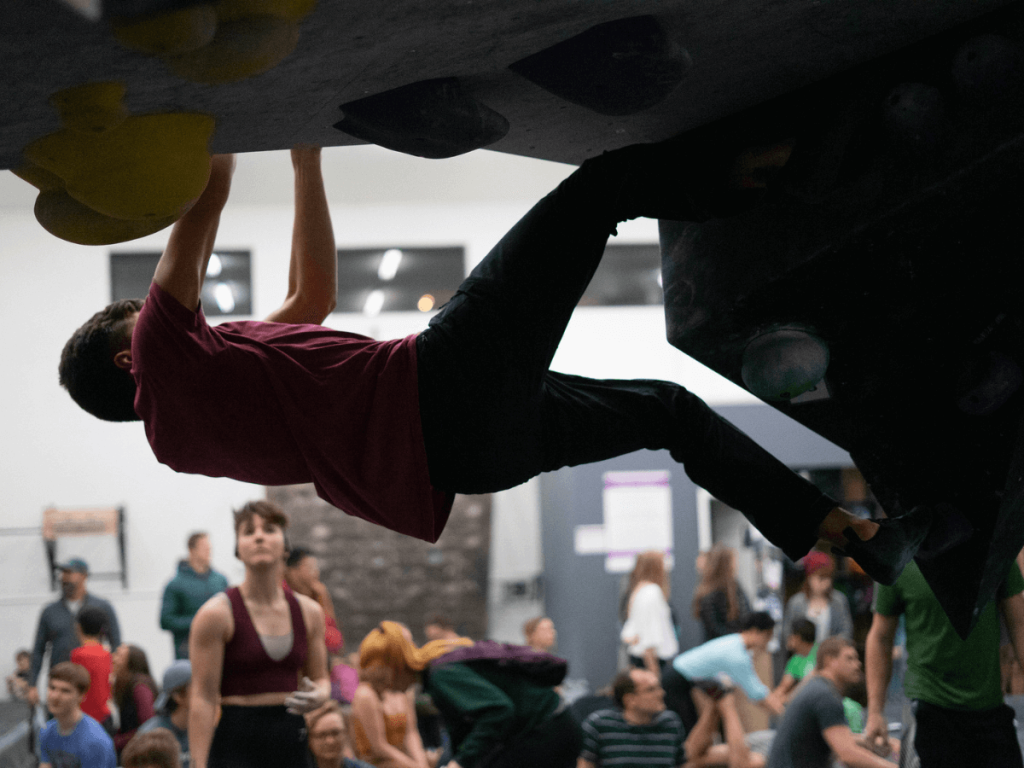Bouldering is a game of trying hard and getting punted. Sometimes, the boulder wins, sending you to the mats or crash pads more times than you make progress. Sometimes, you win, flashing or sending it after many projecting sessions. When bouldering, you expect to lose some and win some, but it feels pretty nice to get the dub. Luckily, there are methods and training techniques you can add to your routine to level up your bouldering game and flip the win ratio in your favor.
This article presents six practical tips that, when consistently integrated into your training regime, can significantly enhance your bouldering skills. These tips are not just for the pros, they are for you, the beginner and intermediate boulderers. Each tip is straightforward enough to be combined with at least one other on the list, allowing you to maintain a balanced life outside of climbing. You have the power to improve your bouldering game, and these Tips are your key to unlocking that potential.

- Limit Bouldering (aka actually trying hard)
During a limit-bouldering session, you try challenging sequences of moves that take 100%+ effort. Notice the use of the word “sequences” rather than “boulders.” There may be a boulder that satisfies the task, but when limit-bouldering, you want to output a high level of effort where making more than 3 or 4 moves is physically impossible.
By implementing one limit bouldering session into your weekly climbing routine, you open the door to realizing significant gains in increasing your max effort when trying to onsight, flash, or send a project. In the past, you might have thought you were trying at your maximum capacity, but you may have yet to unlock your full potential if you’ve never tried limit-bouldering. The potential for growth and improvement is within your reach.
.
- Beta Repetition
Raw strength and power help increase your bouldering capabilities, but learning to climb efficiently is critical as you fatigue. There are a few drills you can try out to improve in this area, including 4×4 variations or perfect repeaters. The goal in whichever drill you choose is to climb a 60-75% effort boulder multiple times in a row, focusing on increasing efficiency with each lap. Measures of efficiencies can include entering a flow state, minimal hand/foot adjustments, or no foot cutting (unless forced). In climbing, ‘beta’ refers to the sequence of moves or the way to climb a route.
If you aren’t familiar with 4x4s or perfect repeaters, here’s a quick overview of each drill.
Perfect Repeaters
Choose a boulder that requires moderate or moderate-hard effort. Repeat this three times, but you must climb the boulder the same way on each lap. Although you may use a less efficient beta on your first go, keep everything the same on subsequent sends. The idea of repeatability is that you can continually execute the movies in the same way as before. Think of the crux of your project—the more times you practice the movement, the easier the send becomes.
4x4s
This more general power endurance drill will help you to climb efficiently. As the name implies, you’ll pick four boulders and repeat them four times each. You have four minutes to do each boulder four times, with four minutes of rest between each climb. As you fatigue on the third and fourth reps, hone your focus on using efficient beta and technique. It’s easy to panic and stop thinking when you become pumped, but if you want to improve your bouldering game, you must stay focused and navigate the situation without letting go.
- Down-Climb Often
Instead of jumping down from the top of the boulder, downclimb. You can downclimb the same problem, an easier problem, or a rainbow climb. The benefits include strengthening muscle strength through eccentric contraction. Think of downclimbing as doing a bunch of assisted, negative pull-ups. Any good pull-up training program incorporates negatives to build strength; the same goes for improving your climbing.
- Campus Climb (aka power training)
Many boulders require high power output. One tried and true way to improve power is through ‘campus climbing ‘. You could campus on a campus board (the wood rung stacks are probably hiding in the corner of the climbing gym). However, it’s also beneficial to campus-climb boulders. Campus rungs are great, but there is no variety in edge or movement. On a boulder, you may have to campus from a crimp to a sloper or pinch to pocket, making campus climbing a more practical drill. In climbing, ‘campus climbing’ refers to a type of training that focuses on upper body strength and power.
Remember, don’t get discouraged if, at first, you can only campus on the juggy, easy boulders. With regular practice, you will build strength on campus through challenging sequences. As you develop your power capacity, adding your feet to the equation will elevate your ability to cruise through sequences of moves that previously demanded maximum effort.
For an extra challenge, campus down-climb too!
- Watch your Feet
Your feet, those things attached to your legs that you spent hundreds of dollars on specialized rubber shoes, are the ultimate key to taking your bouldering game to the next level. Intuitively, when trying to reach the finish at the top of the wall, your primary focus is on what is above, not below, you. You may glance down to locate where to move your foot, but you look away before it lands on the next hold.
Instead, force yourself to watch your foot move from one hold to the next. Don’t look away until you have placed your foot in the exact position you want on the new foothold. As silly as you may feel, really exaggerate the level of focus on your feet. The benefits are two-fold: the conscious effort will turn into subconsciously climbing smarter, and you’ll be able to identify footwork errors faster when projecting.
- Brush Off Those Holds
Saving the most straightforward but least obvious tip for last: brush off those holds! Laugh all you want, but brushing off holds is a wise climbing decision. Watch the pros; they all do it, and for good reason. In commercial climbing gyms, where boulders see high human traffic, the chalk accumulation on holds decreases friction and makes the chalk you put on your hands less effective. It’s also important to brush off footholds as well as handholds. Shoe rubber wears down over time, often leaving visible residue behind. That makes footholds, especially tiny and flat ones, slippery. Whatever you do, don’t skip out on this simple tip!
Your bouldering game is about to get 10x better if you work to implement these six essential tips into your climbing. Learn to try hard at your physical limits, build better climbing efficiency, strength, and power, and brush the holds, and you’ll tick off those challenging projects. Don’t feel overwhelmed in trying to accomplish all six at once. At the very least, brush off the holds before you try the climb and downclimb instead of jumping to the mats. In time, work on adding a weekly limit bouldering session or campus the three boulders at the end of every session. You’ve got this; tell those boulders who’s boss!

Recent Comments